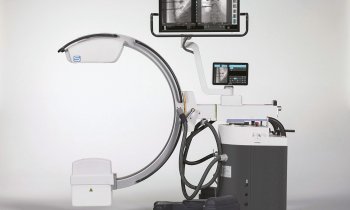A higher definition of surgery
How developments in audio-visual technology hold the key to excellence in the operating theatre.

The increasing trend towards minimally invasive surgery (MIS) is helping to reduce patient trauma and, as a result, is shortening recovery times dramatically. Advances in medical technology have been vital to the proliferation of MIS, such as the advent of smaller cameras, and have made it possible for surgeons to peer into every section of the human body.
The advent of high definition (HD) technology is providing surgeons with greater levels of accuracy in MIS procedures. By combining the use of HD endoscopes and HD displays with a workflow system, surgeons acquire a wealth of rich visual information that allows them to view keyhole procedures with the same clarity as open surgery. This results in improved success rates, fewer infections, shorter hospital stays and faster patient treatment. In turn, this increases surgeons’ efficiency, reduces hospital costs and, most importantly, improves patient care.
After performing the first ever endoscopic procedure using HD technology in the year 2000, Dr. Stephen Palter of the Yale School of Medicine stated the advantages of using HD: “High definition television provides more than double the previous resolution, from fewer than 500 lines to more than 1,000 lines - it’s like looking through a window. It’s that clear. When you use HDTV in surgery, you can see tiny details and structures that were not visible before.”
The use of AV technology is not limited to MIS. In small, but ever increasing numbers surgeons are choosing to film open surgery procedures. By doing so they can keep a detailed record of their operations that can be shared, often in real time, with students and peers. Surgeons are now recording their surgical techniques in HD enabling others to view their approach as if they were in the operating theatre itself.
As European hospitals become increasingly networked environments so these recorded operations can be shared by doctors and students. Professor Bill Heald, a leading UK cancer surgeon has been filming his pioneering procedures in HD for over a year now and explains the advantages, “When you’re broadcasting your images on a huge screen to 200 people in a lecture theatre, you really need the extra resolution that HD can deliver. The Sony HD cameras that I use provide such high quality pictures that what is being seen on the screen is never in doubt - and that has to be good news for our patients.”
As surgeons and hospitals experience the richness of image provided by high definition they will see that it represents the future of healthcare. Through further research and the work of pioneering surgeons in this field, developments are being made that will transform the way the doctors and hospitals treat their patients.
For further information, or to receive a Whitepaper, please contact David Dowe of Sony Healthcare Europe, David.dowe@eu.sony.com
Source: Sony
30.08.2006










